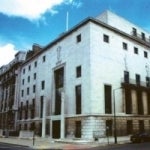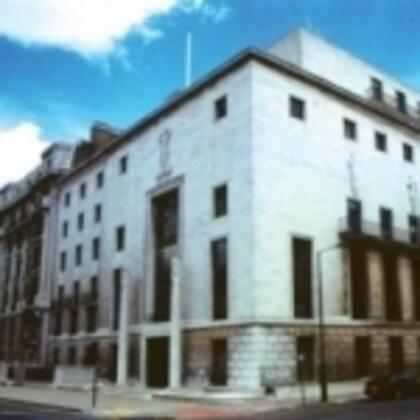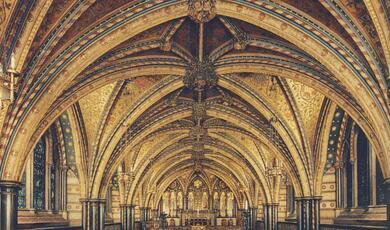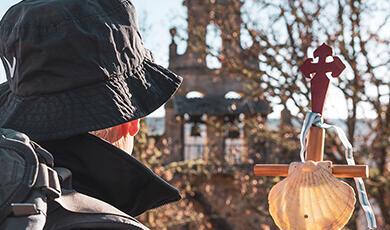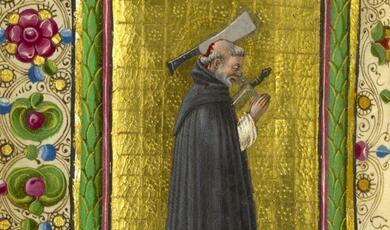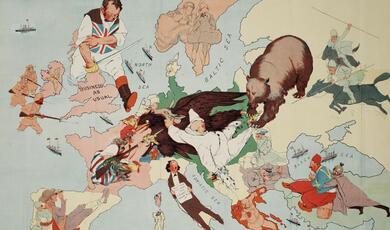The Future of the Past: Treasures from the RIBA Collections
Share
- Details
- Text
- Audio
- Downloads
- Extra Reading
The British Architectural Library at the RIBA is the largest and most comprehensive resource in the United Kingdom for research and information on all aspects of architecture. Its collections are one of the top three in the world and the finest in Europe.
A wealth of subjects in architecture, from prehistory to the present, is encompassed by the collections which contain over four million items in a variety of languages and formats. Allied subjects such as construction, engineering, landscape architecture, interior design and decoration, planning and construction law are also well representation.
This is the third in a series on Special Collections. The other lectures in this series are on the following collections:
Anatomy Museums
The Guildhall Library
The Library and Archives of the Society of Friends
Lambeth Palace Library
Scotland Yard's Crime Museum
The Royal Horticultural Society's Lindley Library
St. Paul's Cathedral
Download Text
28 November 2012 The Future of the Past: Treasures from the RIBA Collections Valeria Carrullo The British Architectural Library, part of the Royal Institute of British Architects, is one of the biggest and most comprehensive architectural libraries in the world. It covers not only architecture but also many related disciplines such as town planning, engineering, landscape architecture, interior design and decoration. In 2006 it was designated by the MLA as an Outstanding Collection of national and international interest. The Library is currently based at two different sites: the books (including the Early Imprints), periodicals and photographs are housed in the RIBA Headquarters at 66 Portland Place; the drawings and archives are held in RIBA premises within the Victoria & Albert Museum. This solution (made necessary by the lack of space at 66 Portland Place) was made possible thanks to the partnership established in 2004 between the RIBA and the V&A to promote the understanding and enjoyment of architecture. The Library was created as an essential part of the Institute, founded in 1834, and began its history with a donation from architect Charles Barry, followed by other donations of books, papers, prints and drawings from the Institute’s members. It subsequently expanded throughout the nineteenth and twentieth centuries and it now holds more than four million items. A closer look at the Collections: Books & periodicals The Library holds circa 150,000 books and over 2000 periodical titles, 600 of which are current journals. Amongst the books of great historic value are those included in the Early Imprints Collection which consists of circa 4000 titles published between 1478 and 1840. Over half of these books are in English and the remainder published in other languages. Some of the highlights include: Vitruvius’s ‘De architectura Libri decem’, of which the Library holds 55 editions in ten different languages (the earliest dating from the fifteenth century); ‘I Quattro libri dell’ architettura’ by Andrea Palladio, one of the most influential architectural books of all time (the Library holds the first edition of 1570 which belonged to Lord Burlington); John Shute’s ‘The first and chief groundes of architecture’ (1563), the first book on the classical orders in the English language; the ‘Heirloom’ copy of Christopher Wren’s ‘Parentalia’ (1750), bound with several manuscripts leaves and additional plates; writings and publications of Leon Battista Alberti, Sebastiano Serlio, Giovanni Battista Piranesi and Claude-Nicolas Ledoux. Another special collection in the Library is the one that includes key works of the international Modern Movement and other related titles, such as the ‘Manifesto dell’architettura futurista’ by Antonio Sant’Elia (1914), the ‘Bauhausbücher’, ‘Arkhitekturnye fantazii’ by Y. G. Chernikhov and other works on Russian Constructivism, the writings of Eric Mendelsohn, Le Corbusier and Frank Lloyd Wright. Drawings & Archives The Collection consists of over one million drawings, the majority of which dating from the eighteenth and nineteenth centuries, and 1.5 million archival items, dating from the seventeenth century to the present day and divided into 800 individual manuscript collections. One of the highlights is undoubtedly the world’s largest collection of Palladio drawings, including nearly 300 designs and sketches. Amongst the British architects represented in the Collection are Inigo Jones, James Stuart, John Webb, Sir John Soane, Sir Edwin Lutyens, C. F. A. Voysey, as well as a number of twentieth century architects such as Ernö Goldfinger, Sir Leslie Martin and Denys Lasdun. An important recent acquisition is C. R. Cockerell’s ‘A Tribute to Sir Christopher Wren’, exhibited at the Royal Academy in 1838 and considered the initial spark for a reappraisal of Wren's work that led to his being regarded until well into the twentieth century as the most important architect England had produced. Materials involved in the process of design (such as models, drawings instruments, portraits and busts of architects) also from part of the Collection. Recently acquired is the model of Easton Neston by Nicholas Hawksmoor (1694), one of the oldest existing models of British domestic architecture. Photographs The Robert Elwall Photographs Collection holds more than 1.5 million items, including photographic prints, negatives, transparencies, slides, postcards and albums. The oldest item in the Collection, a salt print by Henry Fox Talbot, dates from 1843; the most recent are digital images contributed by practicing architectural photographers. nineteenth century highlights also include an image of Abu Simbel, taken in c. 1850 by Maxime du Camp as he was travelling in North Africa and the Middle East with Gustave Flaubert; a set of photographs by Edouard Baldus documenting the construction of the New Louvre in 1854; a unique series of photographs of the just completed Central Park and other images of American architecture dating from the 1860s. A very important and relatively recent addition to the collection has been the archive of the Architectural Press (the publishers of the Architectural Review and the Architects’ Journal) donated by current publishers Emap. This archive comprises circa 500,000 images, both prints and negatives, published between 1930 and 1982. One of its highlights is the c. 2000 glass negatives taken by Dell & Wainwright, official photographers to the Architectural Review between 1930 and 1946 who played a crucial role in promoting Modern architecture in Britain. More recent are the images from the controversial Manplan series, commissioned by the Architectural Review between 1969 and 1970 to illustrate a series of issues on the state of British architecture and town planning. These images were taken by photographers influenced by photojournalism and street photography, including Tony Ray-Jones. Another highlight of the Collection is the archive of British photographer Edwin Smith, the subject of a monograph by the late Photographs Curator Robert Elwall and of a future RIBA exhibition, scheduled for 2014. The Collection also includes the archives of other major British architectural photographers as well as a wide range of portraits of architects and other personalities. The future Conservation and access are two key objectives in the future of the collections. The care of the collections is (and will be) accompanied by a range of activities that aim at making them accessible to the widest possible audience. This is achieved through a constantly growing online image database (currently comprising over 70,000 images), a regular programme of exhibitions, presentations and talks and a structured education programme for schoolchildren and further education students that aims to highlight the importance of architecture in everyone’s daily life through the use of the collections. Access to the British Architectural Library is free and open to all. © Valeria Carrullo, 2012
This event was on Wed, 28 Nov 2012
Support Gresham
Gresham College has offered an outstanding education to the public free of charge for over 400 years. Today, Gresham College plays an important role in fostering a love of learning and a greater understanding of ourselves and the world around us. Your donation will help to widen our reach and to broaden our audience, allowing more people to benefit from a high-quality education from some of the brightest minds.


 Login
Login
